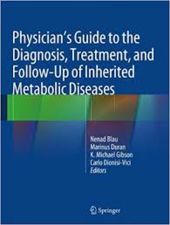Portal:RareDisease
From WikiPathways
Current revision (11:19, 22 March 2021) (view source) |
|||
| Line 47: | Line 47: | ||
{{{{FULLPAGENAME}}/box-normal-q4 | {{{{FULLPAGENAME}}/box-normal-q4 | ||
|<!-- TITLE OF BOX --> | |<!-- TITLE OF BOX --> | ||
| - | ''Special | + | ''Special Issues: '' |
|<!-- EDIT LINK --> | |<!-- EDIT LINK --> | ||
{{FULLPAGENAME}}/SpecialIssue | {{FULLPAGENAME}}/SpecialIssue | ||
Current revision
Rare Disease pathways at WikiPathways
This portal highlights WikiPathways content related to rare genetic human diseases, and is designed
as a central organizing point for exploring, curating and expanding the collection of rare disease pathways.A rare or orphan disease is a disease which affects relatively few people. The exact definition varies
between 1:1000 and 1:200.000. E.g. it can be 1:1500 (USA) , 1:2000 (EU) or 1:2500 (Japan). Rare diseases
are mostly caused by genetic variation making them chronic and hard to cure. The severity depends on
the affected gene and its physiological implications.
This portal is also featured in the latest NAR Database Issue on WikiPathways.
This portal is funded by:
Get information
Explore rare disease pathways on WikiPathways:
Overview table here: [1]
- MECP2 and Associated Rett Syndrome
- Rett syndrome causing genes
- Amyotrophic lateral sclerosis (ALS)
- Fanconi Anemia Pathway
- Viral Acute Myocarditis
- Degradation pathway of sphingolipids, including diseases
- Pathways Regulating Hippo Signaling
- po-Merlin Signaling Dysregulation
- Fragile X Syndrome
- Neurodegeneration with brain iron accumulation (NBIA) subtypes pathway
- Prion disease pathway
- ERK Pathway in Huntington's Disease
- Parkinsons Disease Pathway
- Alzheimers Disease
- Joubert Syndrome
- Envelope proteins and their potential roles in EDMD physiopathology
- Ciliopathies
- Nitric oxide metabolism in cystic fibrosis
- Malignant pleural mesothelioma
- Cholesterol biosynthesis with skeletal dysplasias
- Nucleotide excision repair in xeroderma pigmentosum
Laminopathy pathways
- Lamin A-processing pathway
- The effect of progerin on the involved genes in Hutchinson-Gilford Progeria Syndrome
- The influence of laminopathies on Wnt signaling
- Interacting Laminopathic Pathways
CAKUT (congenital anomalies of the kidney and urinary tract)
- Development of uretric collection system
- Genes controlling nephrogenesis
- Nephrogenesis
- GDNF/RET signalling axis
Disorders of sex development and fertility
- Genes involved in male infertility
- The alternative pathway of fetal androgen synthesis
- Somatic Sex determination
- Mammalian disorder of sexual development
- Kisspeptin/Kisspeptin Receptor System in the Ovary
- Peroxiredoxin 2 induced ovarian failure
- Kallmann syndrome
Copy number variation syndromes (CNVs) - duplications or deletions
- 1q21.1 copy number variation syndrome
- 3q29 copy number variation syndrome
- 22q11.2 copy number variation syndrome
- Prader-Willi and Angelman Syndrome
- 7q11.23 copy number variation syndrome
- 15q11.2 copy number variation syndrome
- 15q13.3 copy number variation syndrome
- 16p11.2 distal deletion syndrome
- 16p11.2 proximal deletion syndrome
Lipodystrophy, dyslipidemia and hyperlipidemia
- Meta pathway lipodystrophy, dyslipidemia and hyperlipidemia
- Familial hyperlipidemia type 1
- Familial hyperlipidemia type 2
- Familial hyperlipidemia type 3
- Familial hyperlipidemia type 4
- Familial hyperlipidemia type 5
- Acquired partial lipodystrophy / Barraquer-Simons syndrome
- Progeria-associated lipodystrophy
- Familial partial lipodystrophy (FPLD)
- Congenital generalized lipodystrophy (CGL)
Inborn errors of metabolism
- Neurotransmitter Disorders
- Purine Disorders
- Pyrimidine Disorder
- Purine metabolism
- Thyroid hormones production and their peripheral downstream signalling effects regarding congenital hypothyroidism
- Gamma-Glutamyl Cycle for the biosynthesis and degradation of glutathione, including diseases
- Cerebral Organic Acidurias
- Glycosylation and related congenital defects
- Metabolic pathway of LDL, HDL and TG
- Classical pathway of steroidogenesis, including diseases
- Disorders of Phenylalanine and Tetrahydrobiopterin
- Tyrosine Metabolism
- Methionine metabolism leading to sulfur amino acids and related disorders
- Disorders of Folate Metabolism and Transport
- MTHFR deficiency
- Vitamine B6-Dependent and Responsive Disorders
- Molybdenum (Moco) cofactor biosynthesis
- Cysteine and Methionine catabolism disorders
- Vitamin B12 Disorders
- Thiamine Disorders
- Disorders of the Krebs Cycle
- Oxysterols derived from cholesterol
- Biotin Metabolism
- Ethylmalonic Encephalopathy
- Amino acid transport defects
- Biochemistry of Glycine metabolism
- Biochemistry of Proline and Hydroxyproline
- Urea cycle and associated pathways
- Amino acid transport defects
- Leucine, isoleucine and valine metabolism
- Glycine metabolism, including IEMs
- GABA metabolism (aka GHB)
- Proline and hydroxyproline pathways
- Serine metabolism
- Biotin metabolism, including IEMs
- Riboflavin and CoQ disorders
- Phosphoinositides metabolism
- Ethylmalonic encephalopathy
Get involved
Contact us
Send questions about WikiPathways to the wikipathways-discuss mailing list.
How to add a pathway to the portal
The list of Featured Pathways is not static and can be updated at any time. If you know of a pathway that should be added, please contact the administrator.
Featured Pathway
|
Alternative pathway of fetal androgen synthesis (Homo sapiens) Image does not exist Alternative pathway of fetal androgen synthesis |
| View all Featured Pathways for this Portal |
Special Issues:
100 rare disease pathways
Great thanks to the work of all pathway creators and contributors - young scientists' projects, old scientists' work! We have reached 100 pathways this month!
Questions, information etc. mail.
Pathways from Blau et al.
|
Image does not exist Krebs cycle disorders | 
|
View all Pathways digitized from Physician's Guide to the Diagnosis, Treatment, and Follow-Up of Inherited Metabolic Diseases by Blau et al.
How to add a pathway to the portal
The list of Featured Pathways is not static and can be updated at any time. If you know of a pathway that should be added, please contact Denise Slenter.
Funding
This project has received funding from the European Union’s Horizon 2020 research and innovation programme.






